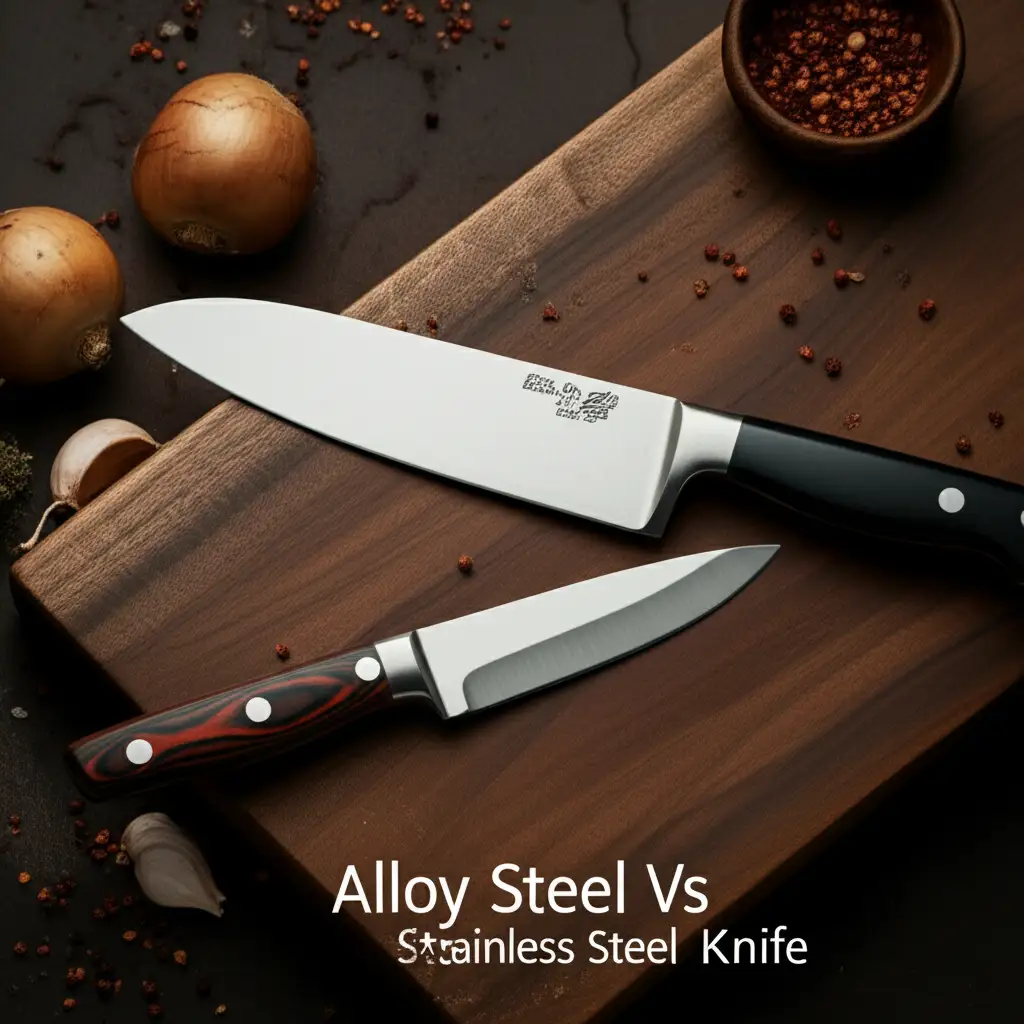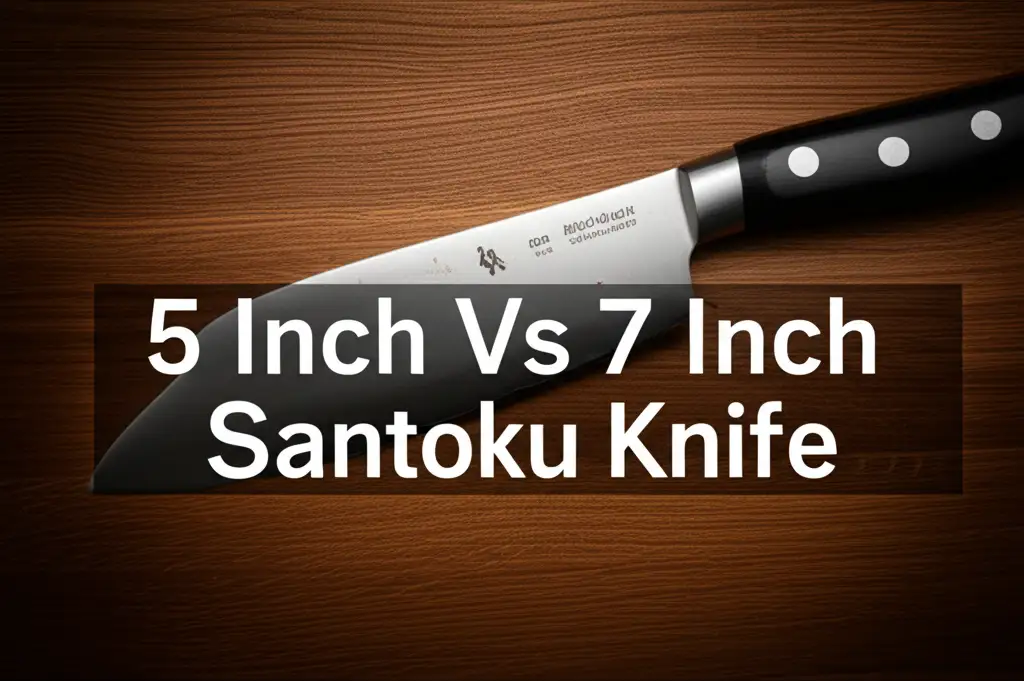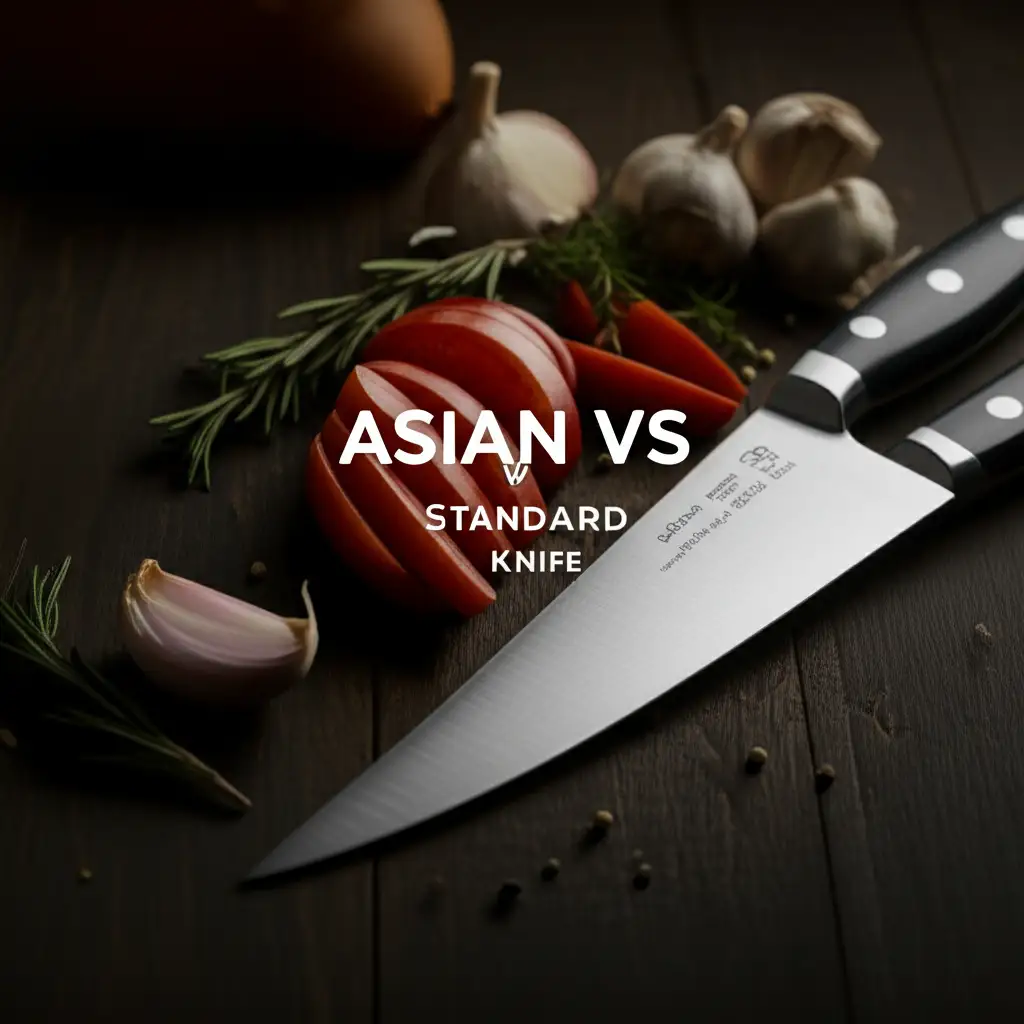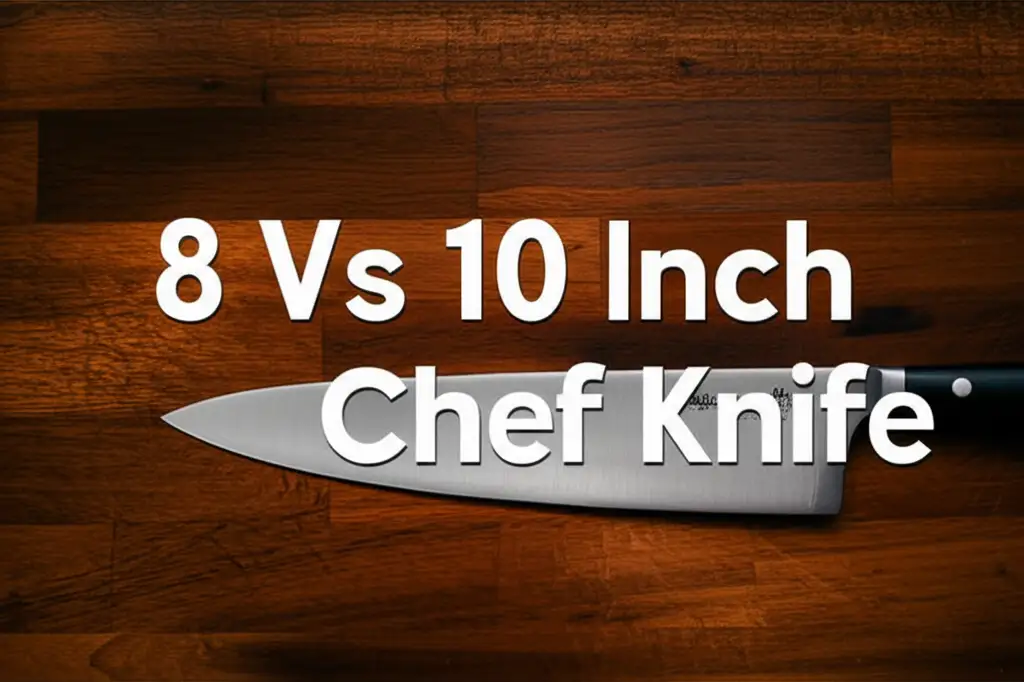· Elira Thomsen · Kitchen Knives · 16 min read
Alloy Steel Vs Stainless Steel Knife

Alloy Steel Vs Stainless Steel Knives: Which Blade is Right for You?
You stand in the kitchen, a recipe waiting, but your knife feels wrong. Perhaps it dulls too fast, or it shows rust spots despite your best efforts. Choosing the right knife material is a big decision for any cook or knife enthusiast. We often hear about alloy steel and stainless steel knives, but what do these terms truly mean for your kitchen or outdoor adventures? I understand this confusion well; it’s like trying to pick between two good friends when you only need one for a specific task.
This article will help you understand the differences between alloy steel and stainless steel knives. We will look at their unique properties, how they perform, and what maintenance each type needs. You will learn about their strengths and weaknesses. By the end, you will know which knife material best fits your specific needs. Let us explore the world of knife steel.
Takeaway
- Stainless steel knives resist rust: They contain chromium, which protects against corrosion, making them low-maintenance.
- Alloy steel knives offer superior edge retention: These blades often achieve higher hardness, holding a sharp edge longer but require more care.
- Consider your use case: Choose stainless steel for everyday kitchen tasks and minimal care. Pick alloy steel for high performance cutting and if you commit to regular maintenance.
- Maintenance is key: Both types benefit from proper cleaning and drying, but alloy steel needs immediate attention to prevent rust.
When you compare an alloy steel knife with a stainless steel knife, the choice depends on your priorities. Stainless steel knives offer excellent corrosion resistance and easy care, making them great for general use. Alloy steel knives often provide superior edge retention and toughness, but they require more diligent maintenance to prevent rust.
Understanding Knife Steels: The Basic Composition
All knives start with steel, but not all steels are the same. Steel is mainly an alloy of iron and carbon. Adding carbon makes iron much stronger and harder. Without carbon, iron would be too soft for a knife blade. This fundamental mix forms the backbone of every knife you use.
Manufacturers add other elements to this iron-carbon base. These added elements create different types of steel with specific properties. For example, some elements increase rust resistance, while others boost hardness or flexibility. These additions are what define a steel as an “alloy.” These changes are important because they directly affect how your knife performs. They also tell us how to best care for the blade.
Different elements create different benefits. Chromium, for instance, is vital for stainless steel. Vanadium improves wear resistance. Manganese helps with strength and hardening. Each element plays a role in the steel’s final characteristics. Understanding these basic components helps you see why knives behave differently. It also explains why some are better for specific tasks than others.
The term “alloy steel” is broad. It means steel mixed with other elements. Stainless steel is a specific type of alloy steel. It always contains a certain amount of chromium. Many other alloy steels exist that are not stainless. These include high carbon steels or tool steels. They gain other benefits from their unique compositions. Knowing this distinction helps clarify the discussion. We can then compare general alloy steels, often carbon-rich, against stainless steel specifically.
Unpacking Stainless Steel Knives: Properties and Benefits
Stainless steel knives are very common in kitchens around the world. Their main benefit comes from a specific element: chromium. For steel to be “stainless,” it must contain at least 10.5% chromium. This chromium forms a passive layer on the steel’s surface. This layer protects the blade from rust and corrosion. I often find this feature very convenient in a busy kitchen.
This high resistance to rust means stainless steel knives are easy to care for. You can wash them and they will not immediately corrode. This makes them perfect for everyday cooking tasks. They tolerate moisture and acidic foods well. You do not need to worry constantly about drying them immediately after use. This ease of maintenance is a big selling point for many home cooks. If you have ever wondered about cleaning stainless steel items, knowing how to handle issues like hard water spots on a stainless steel dishwasher helps with understanding the material’s general care.
While stainless steel excels in corrosion resistance, its hardness and edge retention can vary. Some stainless steels are quite soft, meaning they dull quickly. Others are harder, holding an edge better. Generally, to gain high corrosion resistance, stainless steel sometimes sacrifices a bit of ultimate sharpness or edge-holding ability compared to some non-stainless alloy steels. This is a common trade-off in metallurgy. However, advancements mean some premium stainless steels now offer very good edge performance.
Many kitchen items are made from stainless steel because of its durability and ease of cleaning. From stainless steel mixing bowls to appliances, this material is a kitchen staple. This material choice reflects a need for hygiene and longevity. So, a stainless steel knife often represents a practical and durable choice for daily use. It offers a good balance of performance and low maintenance.
Exploring Alloy Steel Knives: Characteristics and Advantages
When we talk about “alloy steel” knives in contrast to stainless steel, we are often referring to high-carbon steel knives. These steels have a higher carbon content and often lack the significant chromium of stainless steel. This composition gives them different properties. Their primary advantage often lies in their ability to achieve extreme hardness. This hardness directly translates to superior edge retention.
A very hard blade holds its sharpness for a much longer time. Professional chefs or outdoor enthusiasts often prefer these knives. They can slice through tough ingredients with precision or handle demanding tasks in the wild. This characteristic makes them ideal for specialized cutting needs. I have heard many chefs speak highly of their carbon steel knives for this very reason. They appreciate the fine edge.
High-carbon alloy steels can also offer excellent toughness. Toughness means the steel resists chipping or breaking when put under stress. A knife that is both hard and tough is highly desirable. This combination allows for a very keen edge that also withstands hard use. Such knives are not brittle. They can bend slightly without breaking. This characteristic is valuable for demanding tasks.
However, these benefits come with a trade-off. Alloy steels, especially those high in carbon and low in chromium, are very prone to rust. They will discolor and corrode if not cleaned and dried immediately after use. This requires diligent maintenance. You must wash, dry, and sometimes oil these blades after every use. This extra care ensures the knife lasts and performs well. It is a commitment you make for the blade’s superior performance.
Key Performance Metrics: Hardness, Edge Retention, and Toughness
Understanding knife performance involves three main terms: hardness, edge retention, and toughness. These properties are interconnected. They determine how well a knife cuts, how long it stays sharp, and how durable it is. I find these metrics crucial when evaluating any blade.
Hardness refers to the steel’s ability to resist deformation when pressure is applied. A harder steel means a stiffer blade. It resists scratching and wear better. Hardness is often measured on the Rockwell scale (HRC). Generally, a harder blade can take a finer edge. However, a very hard blade can also be more brittle. Think of glass; it is hard but breaks easily.
Edge retention is how long a knife stays sharp during use. This is directly related to the steel’s hardness and its wear resistance. A steel with good edge retention will cut for longer periods before needing to be resharpened. Alloy steels, especially high-carbon ones, often excel here. Their composition allows them to reach higher hardness levels. Stainless steels, particularly those with less carbon, sometimes struggle to hold an edge as long. However, some premium stainless steels now use advanced metallurgy to improve this.
Toughness is the steel’s ability to absorb energy before fracturing. A tough blade will resist chipping or breaking when you accidentally hit a bone or drop it. This is different from hardness. A very hard blade can be brittle if it lacks toughness. For example, a super-hard knife might chip if it hits a cutting board too hard. A tough knife might bend slightly but not break. This balance is important for a knife’s durability.
In general, stainless steel knives offer a good balance of these properties for most users. They are hard enough for most tasks and reasonably tough. Alloy steel knives often push the boundaries of hardness and edge retention. They sometimes sacrifice a bit of toughness in the process. However, some specialized alloy steels manage to combine high hardness with good toughness. It is always a balance between these characteristics.
Corrosion Resistance and Maintenance: A Crucial Comparison
Corrosion resistance is a major factor separating alloy steel from stainless steel knives. This property relates directly to how much maintenance your knife will need. I find this aspect particularly important for everyday use in the kitchen. Understanding it helps you choose wisely.
Stainless steel contains a significant amount of chromium, as we discussed. This chromium reacts with oxygen in the air to form a thin, invisible layer on the surface. This layer, called a passive layer, protects the steel from rust and stains. This is why stainless steel is ideal for kitchen sinks and dishwasher tubs. You can leave a stainless steel knife wet for a short period without immediate worry. It will not discolor from acidic foods like tomatoes or onions easily. This makes cleanup quick and simple.
On the other hand, traditional alloy steels, especially high-carbon steels, contain little to no chromium. This means they lack that protective passive layer. They are very susceptible to oxidation. Exposure to moisture, acids, or even salty air can quickly lead to rust and patina (a dark discoloration). I have seen carbon steel knives develop rust spots within minutes if left wet. This characteristic means they need constant attention.
Maintaining an alloy steel knife requires diligence. After every use, you must wash the blade immediately. Then, you must dry it thoroughly. Many users apply a thin layer of food-grade mineral oil to the blade before storing it. This oil creates a barrier against moisture. This routine prevents rust. Stainless steel knives still benefit from proper care, but they forgive neglect much more easily. You can clean them with standard dish soap and water. They usually do not need oiling to prevent rust.
The choice here comes down to your willingness to perform maintenance. If you prefer a knife you can wash and put away without much thought, stainless steel is your friend. If you do not mind the extra steps for potentially superior edge performance, then an alloy steel knife might be a good fit. It is a trade-off between convenience and performance.
Real-World Applications: When to Choose Which Knife Material
The best knife material for you depends entirely on how you plan to use it. There is no single “best” material. Instead, there is the best material for your specific tasks and lifestyle. Thinking about my own cooking habits helps me make this choice.
For the average home cook, stainless steel knives are often the ideal choice. They are low maintenance. You can wash them after use and not worry about immediate rust. They perform well for slicing vegetables, meats, and general kitchen tasks. Their corrosion resistance means they handle acidic foods without issue. They are forgiving. If you are looking for a reliable, everyday workhorse that doesn’t demand much attention, stainless steel is a safe bet. Many chef knives, whether an 8-inch chef knife or another size, are made of stainless steel for this reason.
Professional chefs and serious cooking enthusiasts might lean towards alloy steel, especially high-carbon steel. They value the razor-sharp edge and superior edge retention these knives offer. For precision cutting, such as fine dicing or delicate butchery, a carbon steel blade can truly excel. The high hardness allows for a very thin, sharp edge that stays keen through long prep sessions. However, these users are usually prepared for the demanding maintenance schedule. They understand the patina that develops on the blade is part of its character.
Outdoor enthusiasts, hunters, and bushcrafters often choose tougher alloy steels. These knives need to withstand abuse. They might be used for batoning wood, field dressing game, or other heavy-duty tasks. Here, toughness becomes paramount. While stainless options exist, some specific alloy steels offer an unmatched combination of edge holding and resilience for rugged use. However, they must still be protected from rust in wet environments.
Consider your budget as well. Entry-level stainless steel knives are widely available and affordable. High-performance alloy steels or premium stainless steels can be more expensive. Your skill level in sharpening also plays a role. Stainless steel is often easier to sharpen for beginners. Alloy steels can be very hard, making them more challenging to sharpen correctly. Match the knife to your needs, not just its material.
Sharpening and Care: Keeping Your Blades in Top Condition
Proper sharpening and care are essential for any knife, regardless of its material. However, the specific techniques and frequency can differ significantly between alloy steel and stainless steel knives. I have learned that a well-cared-for knife always performs better.
Sharpening an alloy steel knife, especially a high-carbon one, can be both a joy and a challenge. Because these steels are often very hard, they can take an extremely fine edge. This edge also holds for a long time. However, their hardness means they can be more difficult to sharpen if they become very dull. You might need diamond stones or specialized sharpening systems to achieve the best results. A sharp alloy steel blade performs with incredible precision. Regular touch-ups on a fine grit stone or leather strop keep the edge pristine.
Stainless steel knives, while often not reaching the same extreme hardness as some alloy steels, are generally easier to sharpen for the average user. Their slightly softer composition means they respond well to common sharpening stones, ceramic rods, and pull-through sharpeners. They might need more frequent sharpening, but the process itself is often quicker and less demanding. This makes them more user-friendly for those who are new to knife maintenance or who do not have extensive sharpening equipment.
Beyond sharpening, daily care is vital. For both types, always hand-wash your knife immediately after use. Hot water and dish soap are usually sufficient. Never put a good knife in the dishwasher; the harsh detergents and high heat can dull the edge and damage the handle. This applies to all knives, even those made from stainless steel, despite their corrosion resistance.
The biggest difference in daily care comes down to drying and storage. With stainless steel, a quick towel dry is usually enough. You can then store it in a knife block, magnetic strip, or sheath. For alloy steel, especially carbon steel, immediate and thorough drying is non-negotiable. Even a tiny bit of moisture can start the rusting process. After drying, many users apply a thin coat of food-safe mineral oil to the blade. This oil creates a protective barrier. Proper storage also prevents accidental damage to the blade and keeps it safely out of reach.
FAQ Section
Q1: Which knife is sharper, alloy steel or stainless steel?
Generally, alloy steels, especially high-carbon varieties, can achieve and hold a sharper edge than most stainless steels. Their higher carbon content allows them to be hardened to a greater degree. This results in a finer, more stable cutting edge. However, modern premium stainless steels can also be very sharp and offer excellent performance.
Q2: Does alloy steel rust easily?
Yes, many types of alloy steel, particularly high-carbon alloy steels, rust very easily. Unlike stainless steel, they lack the high chromium content needed to form a protective layer against corrosion. They require immediate cleaning and thorough drying after every use. Often, oiling the blade for storage is also necessary to prevent rust.
Q3: Are stainless steel knives durable?
Stainless steel knives are very durable for everyday use. Their chromium content makes them highly resistant to rust and corrosion. This means they withstand moisture and acidic foods well. They are also generally tough enough to resist chipping for most kitchen tasks. Their low maintenance contributes greatly to their longevity.
Q4: Can I put an alloy steel knife in the dishwasher?
No, you should never put an alloy steel knife in the dishwasher. The hot water, harsh detergents, and prolonged exposure to moisture in a dishwasher will almost certainly cause the blade to rust and pit rapidly. Dishwashers also degrade handles and dull knife edges quickly. Always hand-wash and immediately dry alloy steel knives.
Q5: Which knife material is better for professional chefs?
Many professional chefs prefer high-carbon alloy steel knives for their superior edge retention and sharpness. These knives allow for precise cuts and reduce the need for frequent sharpening during busy shifts. However, some chefs also use high-end stainless steel knives. The choice often depends on personal preference and willingness to perform extra maintenance.
Q6: What is a common “alloy steel” for knives if it’s not stainless?
A common and highly regarded type of “alloy steel” for knives that is not stainless is high-carbon steel. These steels often contain higher amounts of carbon and minimal chromium. They are known for their ability to achieve very high hardness and excellent edge retention. Popular examples include steels like 1095 or A2 tool steel.
Conclusion
Choosing between an alloy steel knife and a stainless steel knife comes down to understanding your specific needs and priorities. We have explored the fundamental differences. Stainless steel blades offer convenience and strong corrosion resistance. They are perfect for general kitchen use and busy households. They require less vigilant care, making them a practical choice for many.
On the other hand, alloy steel knives, often high-carbon steel, provide superior edge retention and toughness. They can achieve incredible sharpness. This makes them ideal for specialized tasks or for users who demand peak performance. However, this comes with a greater need for maintenance. They require immediate cleaning and thorough drying to prevent rust.
Consider your daily routine, how you will use the knife, and your willingness to commit to maintenance. There is no universally “better” choice. The best knife is the one that fits your hand, your tasks, and your lifestyle perfectly. Evaluate these factors to make a smart choice for your next blade. Equip your kitchen with the right tool.





